Message In The Bottle
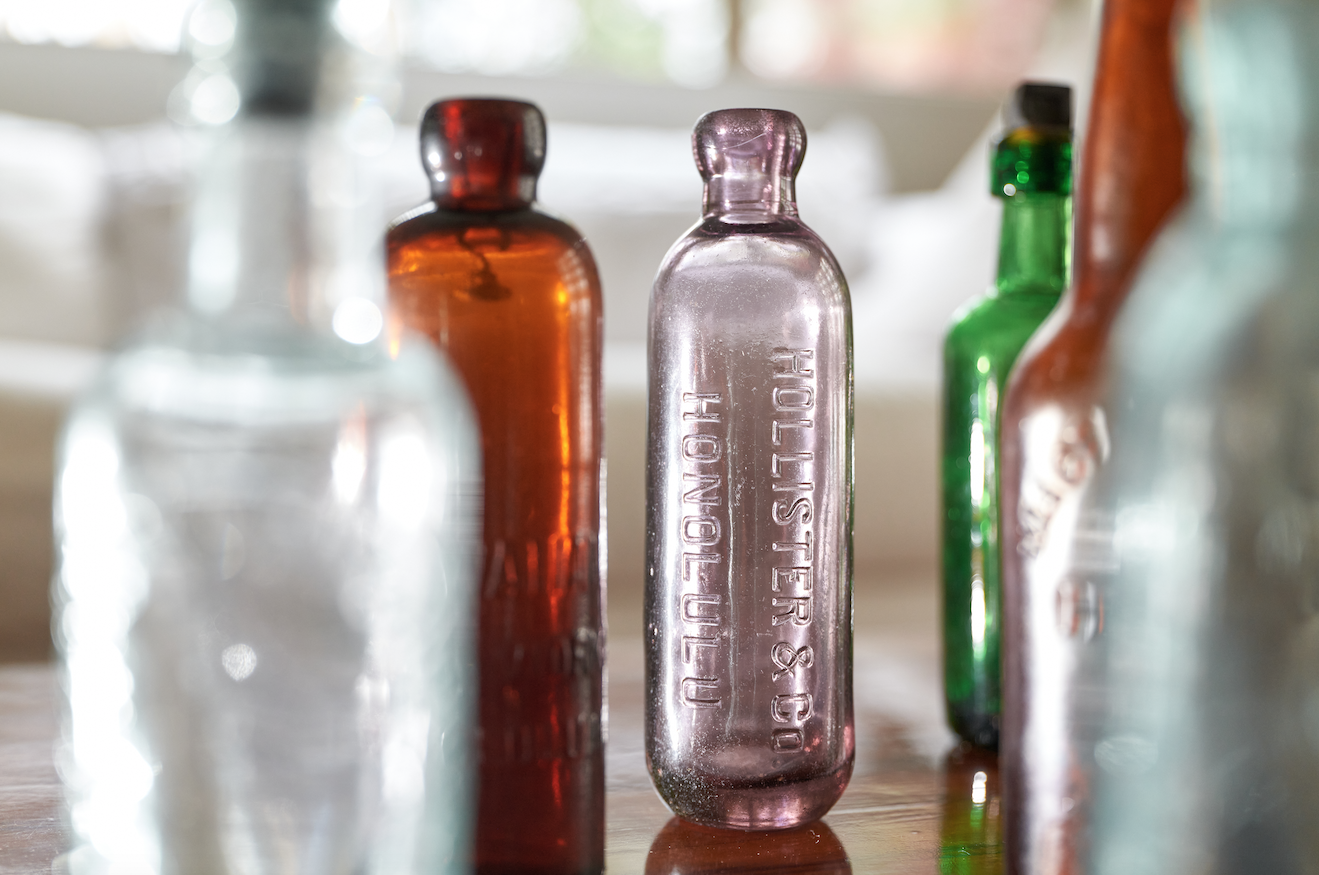
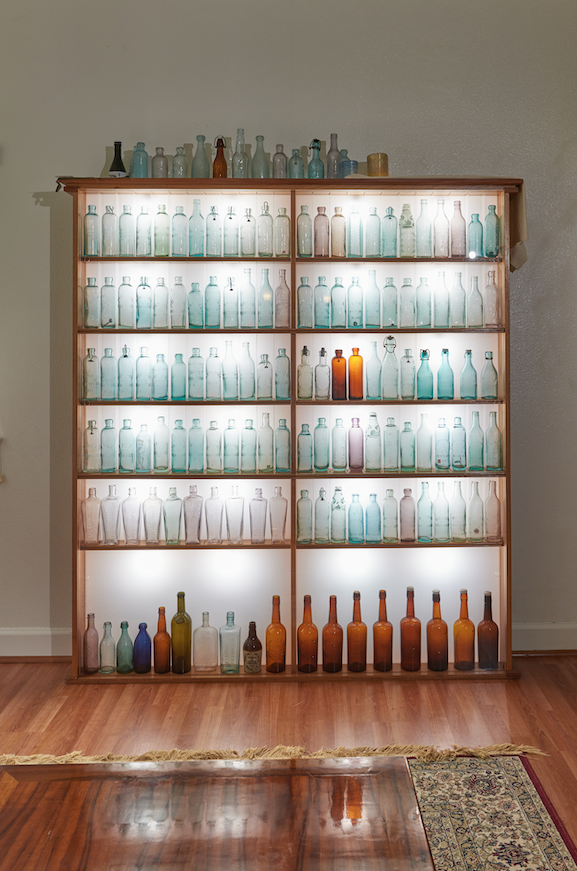
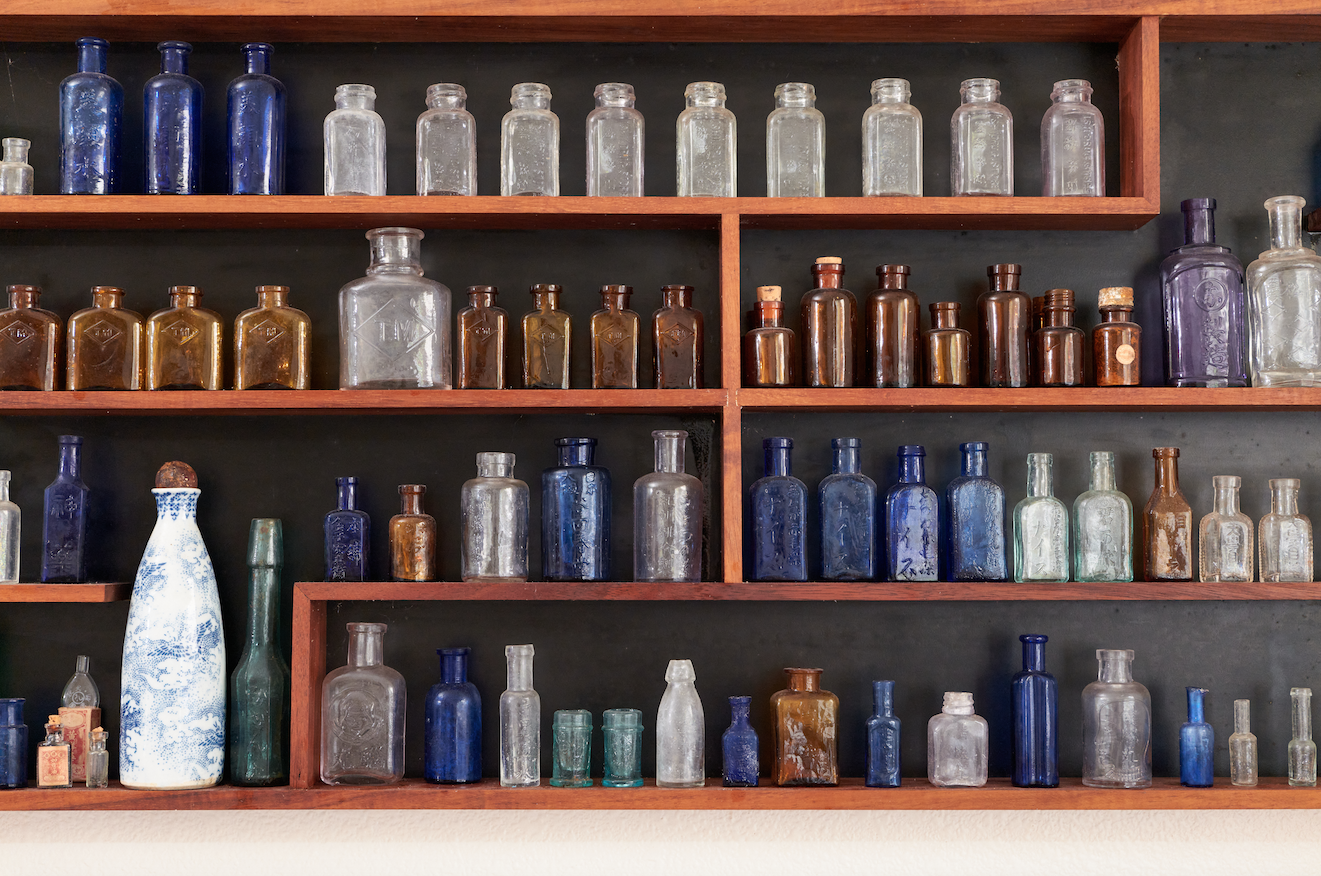
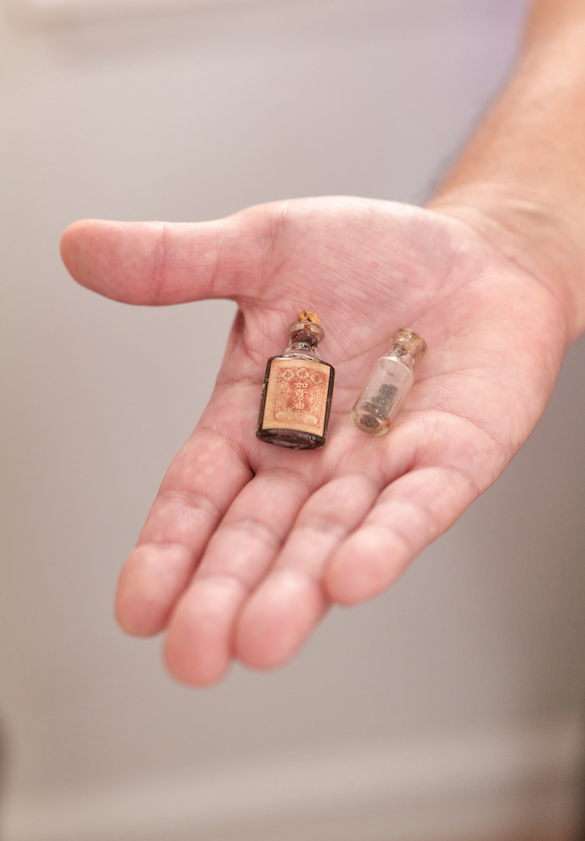
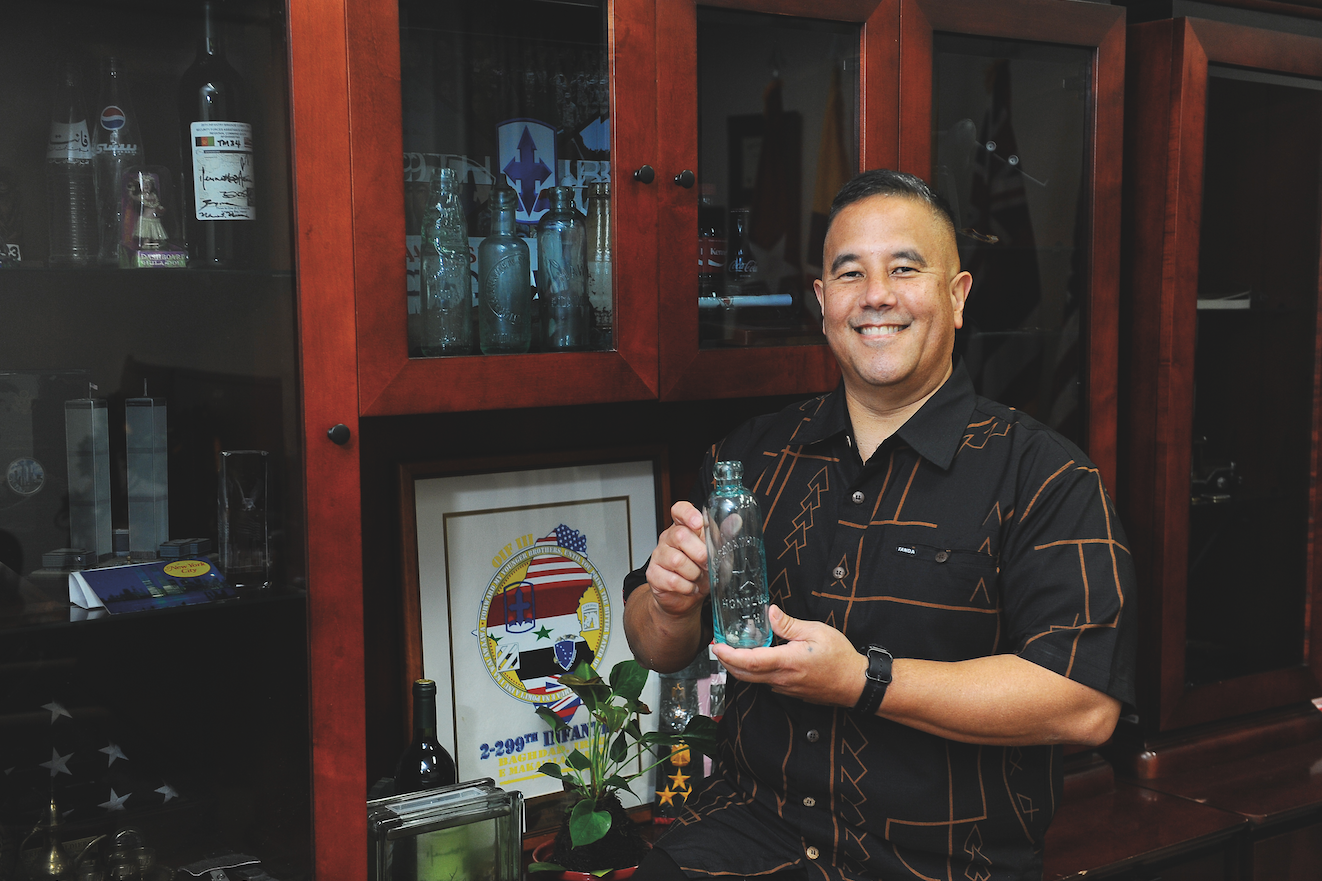
FOR THE PAST 36 YEARS, MAJ. GEN. KENNETH HARA HAS SERVED IN THE HAWAI‘I ARMY NATIONAL GUARD. First, as a greenhorn fresh out of Waiākea High School in Hilo; today, he’s the state adjutant general, making him the director of the Hawai‘i Department of Defense and the de facto commander of the Islands’ 5,500-plus Army and Air National Guard troops. Hara is also the director of the Hawai‘i Office of Homeland Security; director of the Hawai‘i Emergency Management Agency, responsible for coordinating response efforts to disasters across four of Hawai‘i’s five counties; and incident commander for Hawai‘i’s COVID-19 pandemic response team. (Those are the folks who helped issue stay-at-home orders and the 14-day self-quarantine on recent arrivals to the islands, which flattened the infection curve in Hawai‘i last spring.)
Hara’s got a full plate. And if you’re looking for this Legion of Merit, Bronze Star Medal and Army Commendation Medal honoree on the few occasions when he’s not commanding troops on a battlefield overseas or directing disaster or coronavirus relief efforts here on O‘ahu, you can sometimes find him ... digging for buried treasure out in the middle of the woods?
“I would say that 90 percent of all my finds were from digging. Slowly, there were less opportunities to dig as my National Guard career got more demanding,” says Hara, with a laugh. “It was also a lot easier when I was younger and had a little more energy.”
The major general is searching for gold. Specifically, the see-through kind: clear, green, or brown glass bottles used by numerous local soda and spirit companies in the 1800s and 1900s. Though Hawai‘i couldn’t sustainably produce glass bottles in the islands (“Getting the necessary silica sand and soda to make the glass, plus fuel for the furnaces, was too cost prohibitive,” Hara says), local brands—including O‘ahu Soda Works in Honolulu, the Waimea Water Company on Kaua‘i, Lāhainā Ice Co. on Maui and the North Hilo Soda Works on the Big Island, as well as a dozen other beverage companies—had custom bottles shipped to Hawai‘i specially designed with their company name or various other insignia embossed along the sides. It’s a type of bottle known as “blown in mold” with an “applied lip,” or BIMAL for short.
“Imagine a hinged metal mold in the shape of a bottle that liquid glass gets poured into, then hardens as it cools. Eventually, they figured out how to mass produce bottles with an automatic bottle making machine, or ABM. But back in the day, every individual bottle was hand-blown so BIMALs are all different,” says Hara. “That’s what most collectors are looking for.”
A BIMAL bottle was what Hara first found as a teenager in the mid-1980s. After a long afternoon playing basketball one day with his friends in Hilo, a buddy suggested they go digging for bottles in a forested area nearby. “At first, I was like, ‘no.’ I was tired. But then my friend said looking for bottles was fun, you can find stuff from a hundred years ago, and they can be worth a lot of money ...” The idea piqued Hara’s curiosity, and he decided to join his friend. Later that day, while digging at the base of a mango tree, Hara found his first bottle: an intact soda bottle from the 1800s. “From that day on, I was hooked.”
For the first five to eight or so years, when Hara wasn’t on shift with the National Guard or attending officer candidate school, he was digging for bottles. He’d study old maps of the Big Island to locate plantation camps that were long since abandoned, which were prime spots for where former field workers might’ve tossed their empties. He’d go on expeditions through the jungle and spend hours digging; through his research and perseverance (and sweat equity), Hara found an average of 20 to 30 bottles a year.
As Hara’s duties in the military grew, it became harder to carve out time for digging so he began buying bottles at estate auctions or trading with other enthusiasts he met in the local vintage bottle collecting community. Hara connected with collectors who showcased their collections at the annual Hawai‘i All-Collectors Show at the Blaisdell. He also credits a publication, Hawaiian Bottles of Long Ago, written by Rex Elliott and Stephen Gould, with providing good information about the islands’ old-school soda producers and alcohol distillers and the bottles they used. “A lot of the big collectors here, they don’t sell their bottles. They rather trade to get the ones they want,” says Hara. A few years into collecting, Hara set a goal for his own collection: He wanted to collect each of the soda bottles that came from Hawai‘i Island, where he was raised.
It’s a challenge that ended up being tougher than it seems. Based on his research, Hara discovered there were more than a dozen soda companies on the Big Island. Some, like the Excelsior Soda Works Company, had more than nine different types of bottles. “You really have to know what you’re doing,” Hara says. “For example, Bay City Soda Works is one company that had two different types of bottles when they were in Hilo. The wording is exactly the same and the design is similar on both. But one is worth several thousand dollars and the other is worth only a couple hundred dollars. You could really mess up if you buy something rare thinking it’s the more common one.”
Prices for vintage Hawai‘i bottles vary from a few bucks to a few thousand on eBay. (Of course, they’re free if you dig.) What’s the most amount of money that Hara ever paid for a bottle? “I’m pretty sure my wife is going to read this article so I’d rather not say ...” Suffice it to say that no matter the price of one single bottle, Hara’s collection—which today numbers close to 200—is invaluable. The gem is a blob top squat bottle from H&H Honolulu that dates all the way back to 1869 (which places it even earlier in Hawaiian history than the reign of King Kalākaua). After 34 years of searching, Hara even found the last missing piece needed to complete his collection: a soda bottle from the former High Test Soda Works in Hilo.
“To be honest, I never thought I’d get the entire collection. Some bottles, there might be less than five known to exist. There are other bottles where there’s only one left,” says Hara. “It’s exhilarating when you find something on a normal day. But finishing my collection has been a dream.”
One might imagine that a veteran might be more interested in having a hobby that doesn’t rely on the same skills required for the military, such as land navigation tactics, being able to track things in unknown territory, and digging foxholes. But for Hara, commitment to a cause is his way of life.
“My entire family was in the Hawai‘i Army National Guard: My dad, uncle, three brothers, and now, my son. I knew from a very young age that I would eventually join. It was kind of like destiny for me, I guess,” muses Hara. “When I’m collecting bottles, I think about the history. Who drank this? You look at photos of soldiers in Hawai‘i getting ready to fight in the Spanish American War or World War II and you see them pictured with all these soda bottles. Maybe a soldier drank from one of these bottles before going to war. Who knows?”
